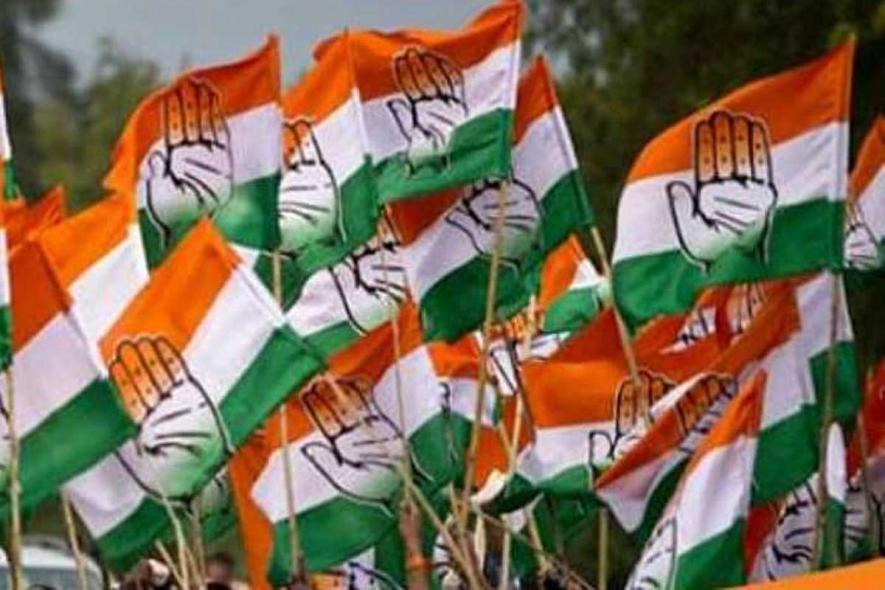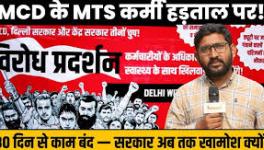How Long Will it Take for the Congress Party to Revive Itself?

Representational Image. Image Courtesy: The Financial Express
How formidable is the transition to the Right in Indian politics? Is the preeminence of the BJP here to stay and will the Congress party not revive but, as some say, die a slow death? The anti-colonial movement was inclusive and attempted a “gradual revolution” that roughly meant an incremental social change in caste and economic inequalities, gender practices, and regional inequalities, without radical transformation in any of the structures.
One could read that movement as either too minimalist or conservative or as the best path India could have followed given its diversity and underdeveloped status. The nature of change initiated by Gandhi and Nehru made it possible to have a functional democracy with political freedoms and constitutional morality, a universal adult franchise, and social democratic citizenship that was welfarist and inclusive.
The nature of the polity designed did not threaten the hold of the caste Hindu elites, while it allowed for slow and minimal change at the bottom of the caste-class structure. It was the tremendous social and economic gaps that allowed for the hegemony of centrist politics. A combination of caste Hindu Liberalism and classist Constitutionalism prevailed.
Five decades later, India was changed by the neoliberal reforms of the 1990s, which sought faster economic growth, and reservations for the backward classes which represented new aspirational social groups. The Congress party felt it could manage the new dynamics through higher growth rates and more inclusive social processes. It kept welfarism going, alongside neoliberalism.
India witnessed more welfare but also greater inequalities. Still, the new imagination led to an exponential rise in subaltern aspirations, give the democratic imagination a wider spread and there was more assertion too. These, possibly, began to threaten the caste Hindus for the first time. It was visible in the changing equations and the loosening of caste hierarchies, while economic insecurities persisted and deepened.
It is at this point that both the caste Hindus and subaltern groups moved away from the Congress party. The elites felt the threat of growing subaltern castes and their assertion for a greater share of the country’s resources. It looked like the Congress and its social democratic vision would lead to further erosion of the hold of caste Hindus.
Ironically, even the subaltern castes felt short-changed by Congress. The change was insufficient to meet the aspirations that the social democratic discourse of the Congress nurtured.
By the turn of the century, India needed a new vision that could pull the elites together with subaltern aspirations. This is the space that Hindutva politics began to fill, by assuring caste Hindu elites that their “lost” glory would be reinstated through the Hinduisation of society. Elites perceived their interests lay in making India more Hindu.
The subaltern castes were addressed through more representation and with the promise that being included as Hindus would give them more mobility. What helped mobilise their latent anger was anti-elitist discourses and co-option of local cultural idioms, other than extra-institutional street mobilisation.
As a result, the social elites felt safer in abandoning the transformative constitutional vision, while the subaltern castes took succor in cultivated incivility and the wanton breaking up of institutions that were always seen as havens of caste Hindu privilege.
Their common Hindu identity assured the caste Hindus although political leadership shifted under the BJP regime to the lower “Shudra” castes—including Prime Minister Narendra Modi’s claim that he is a pichada (member of a backward community). Progressively, the BJP could manage to be more inclusive in its leadership and political representation, yet keep a core Hindu identity that was essentially caste Hindu in its social character.
Today, BJP leaders can claim to be pichada without creating anxiety among the rest. They can afford to do much less in terms of social justice but offer far more aggressive rhetoric in favor of the subaltern castes. Meanwhile, the Congress might be more welfarist but it cannot claim it is so, from fear of offending the rest. From Centrism, Congress has landed in No-ism.
It is neither able to be more radical and shift the power balance in favour of the subaltern castes because it fears being abandoned by the dominant elites, a numerical minority who are disproportionately powerful in social and economic terms. Nor is it able to convince the elites that its social democratic vision is not as radical as they think and that the changes it proposes will remain as minimalist as they were in the past.
Paradoxically, the subaltern groups certainly see the changes that the Congress brought about as being minimalist and patronising. Therefore, they had begun to perceive those changes as “adding insult to injury”.
Meanwhile, the BJP-RSS combine began to propagate the illegitimacy of the Congress kind of “appeasement”. The misnomer of appeasement is a clear case wherein Muslims and other minorities received limited tangible benefits, yet in popular perception, it was seen as a major tilting of the balance in favour of Muslims, Dalit, and Adivasi groups that constituted the traditional social base of the Congress.
The BJP began with the support of the anxious caste Hindus and progressively included the already disgruntled subaltern castes, also by “othering” the Muslims. It devised a technique wherein the Dalit and OBC communities would retain their caste status for representation but “become Hindus” for recognition.
This offer of a common Hindu identity allowed the BJP to give more representation to subaltern castes. It could also claim caste identities more openly and yet argue that it is above “jat-pat [caste discrimination]”; perpetrate violence against the Dalits and yet legislate a policy that assists the Economically Weaker Sections among the elite castes.
These strategies—though at cross-purposes—are changing the terms of inclusion. They are creating new aspirations and also keeping those aspirations in waiting or abeyance. This game of the BJP-RSS combine will continue until a new imagination breaks the impasse to bring a radical change. That change may require the caste Hindus to feel convinced to share power and resources and restore their faith in liberalism and its constitutional vision.
The Congress, at this juncture, is unable to find such an Archimedean point. The problem in society is also that it is stuck within its rank and file. The recent protest by the G-23 [group of ‘disgruntled’ Congress leaders who have expressed their concerns to the party leadership] is a symptom of the anxiety of caste Hindu leadership in the Congress, even as it has barely made significant changes in its leadership to include more Dalits and those from backward castes. In this sense, the journey of the Congress and the future of India are tied together.
The author is an associate professor at the Centre for Political Studies, Jawaharlal Nehru University, Delhi. The views are personal
Get the latest reports & analysis with people's perspective on Protests, movements & deep analytical videos, discussions of the current affairs in your Telegram app. Subscribe to NewsClick's Telegram channel & get Real-Time updates on stories, as they get published on our website.
























